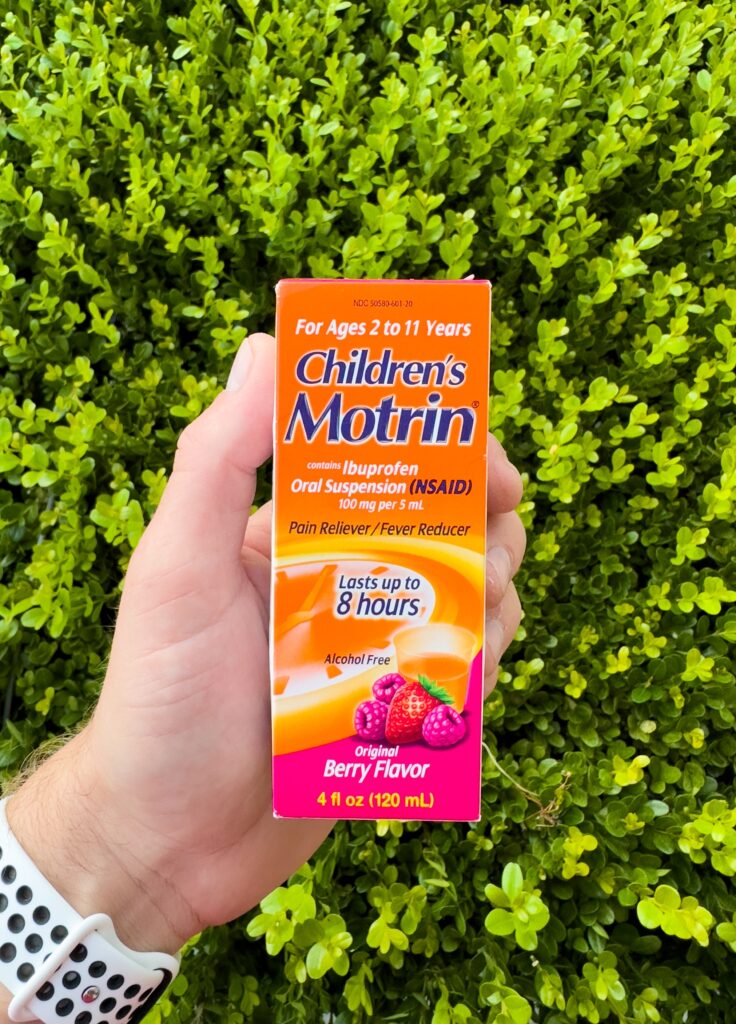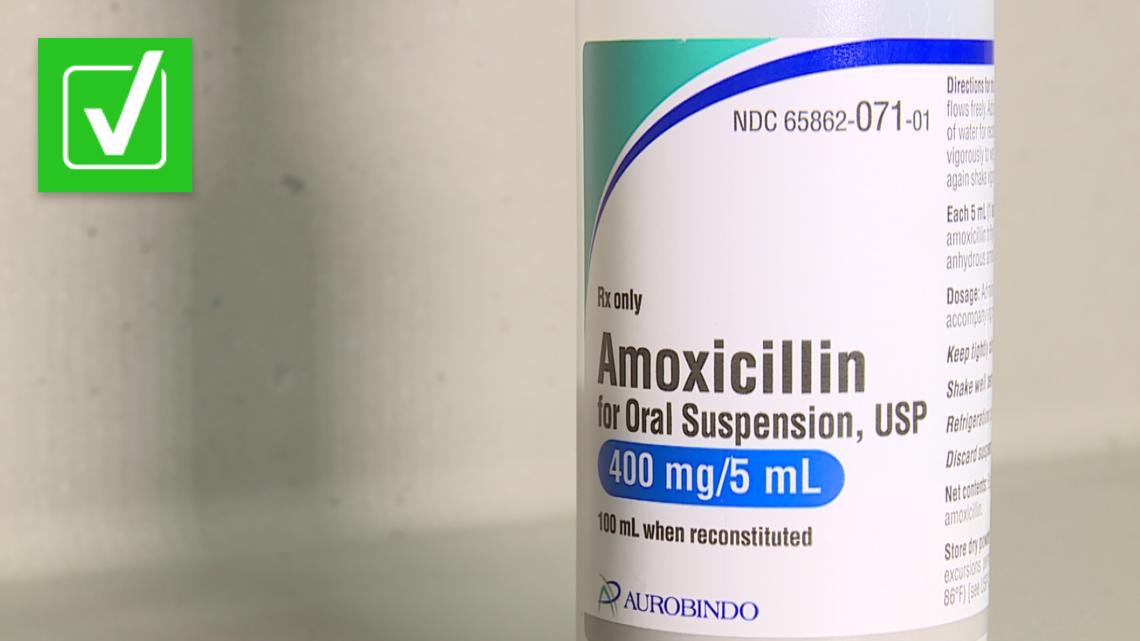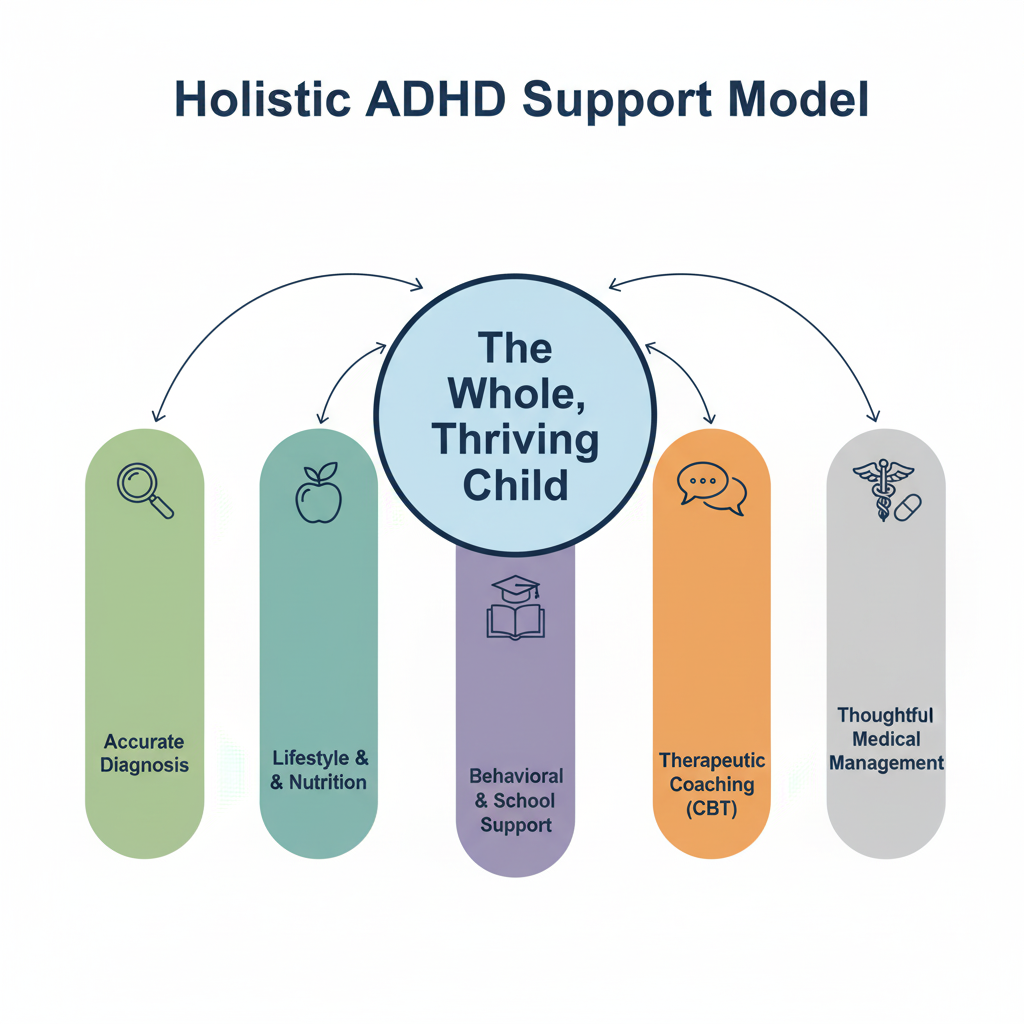Please consult a healthcare professional for specific medical advice. The information provided is for educational purposes and should not be considered a substitute for professional medical care.
As pediatricians serving the Beverly Hills community, we understand how challenging it can be to watch your child struggle with fever or pain. Getting the correct children’s ibuprofen dosage is crucial for safe and effective relief. This guide will help you safely determine the exact amount based on your child’s weight, ensuring proper treatment when your little one needs it most.

What is Children’s Ibuprofen and How Does Dosage Work?
Ibuprofen dosage is based on a child’s weight, not age. Ibuprofen is a non-steroidal anti-inflammatory drug (NSAID) that reduces hormones in the body responsible for inflammation and pain. Unlike some other fever reducers, the correct dosage offers dual benefits by both lowering fevers and relieving minor aches and pains from headaches, teething, or small injuries.
You’ll find children’s ibuprofen sold under brand names like Motrin and Advil, and it’s considered one of the safest over-the-counter medications when you follow the proper guidelines.
Why Weight-Based Dosage Matters More Than Age
The most important thing to remember about dosing is that your child’s weight, not their age, determines the correct amount. Many parents make the mistake of using kitchen spoons or estimating doses, which can lead to dangerous overdoses or ineffective treatment.
Always weigh your child recently and use the measuring device that comes with the medication. This approach ensures your child gets the right amount for their body size, which is the standard of care we follow in our practice.
Complete Dosage Chart by Weight
Here’s the essential chart for the most common form (100 mg/5 mL). Remember to consult with your pediatrician before giving any medication.
Table 1: Children’s Ibuprofen Dosage Chart (100 mg/5 mL)
| Weight (lbs) | Weight (kg) | Dose (in mL) | Dose (in tsp) |
|---|---|---|---|
| 12-17 | 5.4-7.7 | 2.5 | 1/2 |
| 18-23 | 8.2-10.4 | 5 | 1 |
| 24-35 | 10.9-15.9 | 7.5 | 1 1/2 |
| 36-47 | 16.3-21.3 | 10 | 2 |
| 48-59 | 21.8-26.8 | 12.5 | 2 1/2 |
| 60-71 | 27.2-32.2 | 15 | 3 |
| 72-83 | 32.7-37.6 | 17.5 | 3 1/2 |
| 84-95 | 38.1-43.1 | 20 | 4 |
Note: You can repeat this dose every 6 to 8 hours as needed. Never give more than four doses in 24 hours without a doctor’s supervision. Always use the measuring cup or syringe provided with the medication.
Understanding Different Forms and Variations
Ibuprofen varies depending on the form and concentration. Understanding the differences helps prevent dosing mistakes that could harm your child.
Table 2: Ibuprofen Forms and Concentrations
| Product Type | Concentration | Best For |
|---|---|---|
| Infant Drops | 50 mg/1.25 mL | Infants 6-11 months |
| Children’s Liquid | 100 mg/5 mL | Toddlers and older |
| Chewable Tablets | 50 mg or 100 mg | Children who can chew |
| Junior Strength Tablets | 100 mg | Older children |
Warning: Infant drops are much more concentrated than regular children’s liquid. Using infant drops with a measuring spoon meant for regular liquid can cause an overdose. Always read the label carefully and follow the specific children’s ibuprofen dosage instructions for each product type.
FAQ
No, don’t give ibuprofen to babies under 6 months unless your pediatrician specifically tells you to. The safety hasn’t been established for this age group. Acetaminophen is typically the safer choice for very young infants.
You can give another dose every 6 to 8 hours when needed. Don’t exceed four doses in 24 hours without talking to a doctor first.
If your child vomits immediately after the dose, their body probably didn’t absorb the medication. You can try giving another dose. If they vomit again, wait until the next scheduled dose and call your pediatrician.
Yes, alternating these medications can help manage high fevers or severe pain since they work differently in the body. Ask your pediatrician for a specific alternating schedule that’s right for your child.
Ibuprofen reduces inflammation, swelling, and pain, while acetaminophen primarily works on fever and pain. For pain caused by inflammation like a sore throat, ibuprofen often works better.
Yes, giving ibuprofen with food or milk helps reduce the chance of stomach upset, which can be a side effect.
Absolutely. If your child has pain from a minor injury, headache, or other discomfort but no fever, the correct children’s ibuprofen dosage is still safe and effective for pain relief.
Watch for nausea, vomiting, dizziness, drowsiness, blurred vision, or ringing in the ears. Severe overdoses can cause stomach bleeding or kidney problems. If you suspect an overdose, call Poison Control immediately at 1-800-222-1222.
Chewable tablets are designed to be chewed and swallowed whole, not crushed. If your child can’t chew them properly, use the liquid form instead.
If the fever doesn’t respond to the proper children’s ibuprofen dosage, or if your child seems unusually sick, lethargic, or irritable, contact your pediatrician. Fever often signals an underlying illness that may need medical attention.
Important Safety Guidelines for Children’s Ibuprofen Dosage
Children’s ibuprofen dosage guidelines are generally safe when followed correctly, but precision matters. Never guess at the children’s ibuprofen dosage or use random measuring spoons. Always read the medication label, use the correct measuring tools, and contact your pediatrician with any concerns about the appropriate children’s ibuprofen dosage for your child.
Remember that while ibuprofen provides relief from symptoms, it doesn’t cure the underlying condition causing your child’s discomfort. Pay attention to other symptoms and trust your parental instincts about when something seems more serious.
Your Partner in Pediatric Care
Safe children’s ibuprofen dosage comes down to three key principles: dose by weight using our children’s ibuprofen dosage chart, measure accurately with the provided tools, and stick to the recommended timing. When you’re unsure about the correct children’s ibuprofen dosage, it’s always better to call your healthcare provider than to guess.
Fever and pain are your child’s body’s way of signaling that something needs attention. While ibuprofen can provide much-needed relief, addressing what’s causing the symptoms is equally important for your child’s health and recovery.
At Beverly Hills Pediatrician, we’re here to support parents with reliable, evidence-based guidance. We know that every parent wants to provide the best possible care, and having trustworthy information makes those worrying moments much more manageable.
For personalized advice about your child’s health needs, consider our concierge medicine services that give you 24/7 access to pediatric expertise. Whether you need immediate guidance about medication or want to discuss your child’s overall development, our team is ready to help your family.
Ready to work with a pediatric team you can trust? Schedule an appointment today, or contact us with questions. Visit our blog for more helpful parenting resources and health insights from our medical team.




